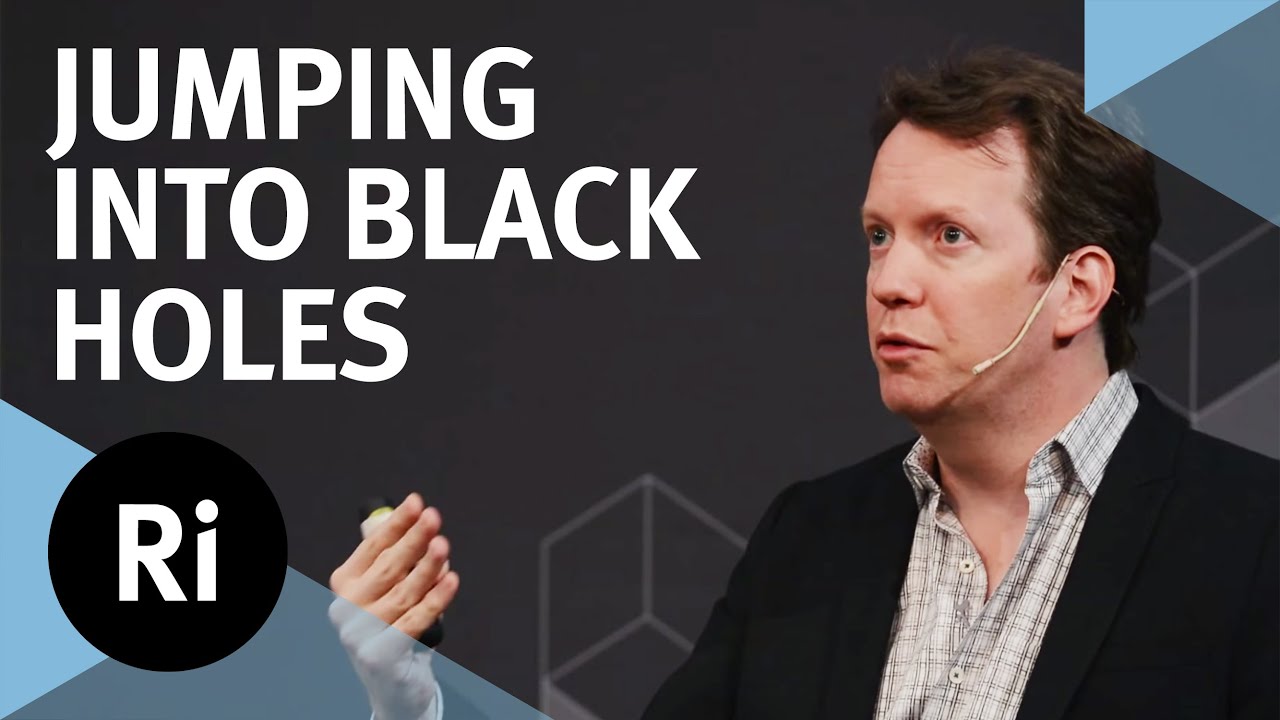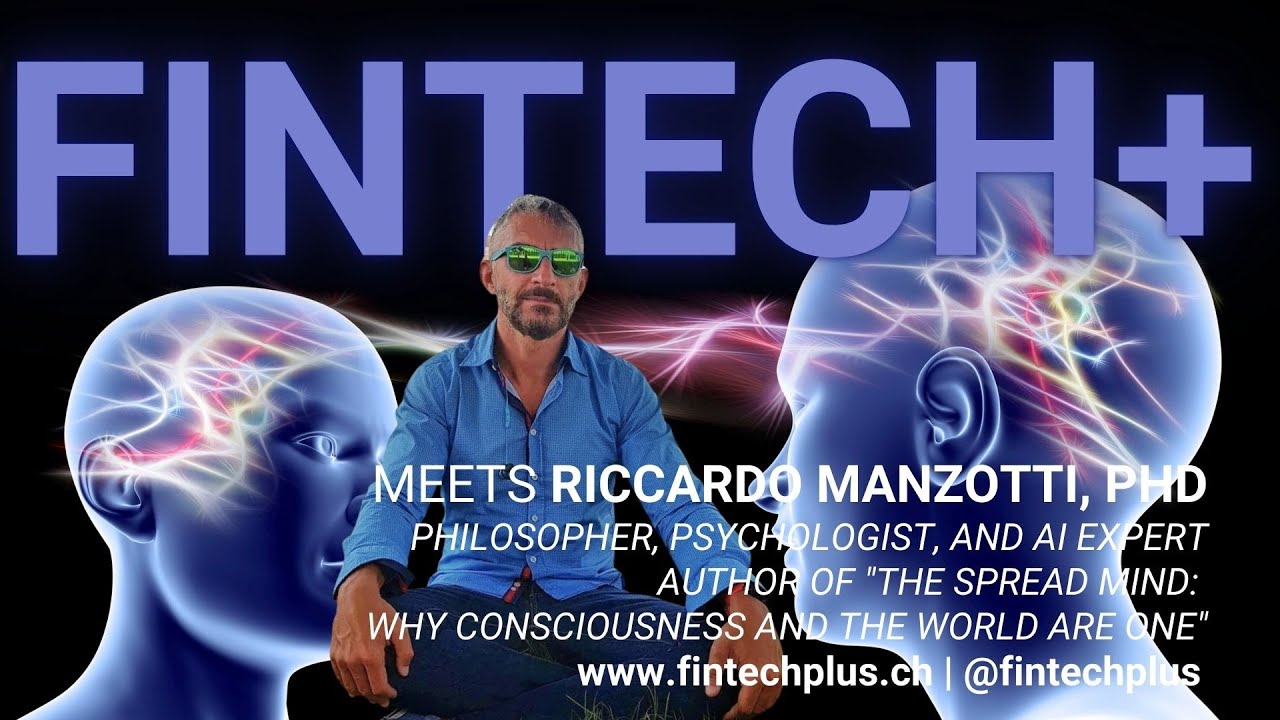The Royal Institution
What would you experience if you jumped into a black hole?
Help us add subtitles to this lecture: http://www.youtube.com/timedtext_video?v=_8bhtEgB8Mo
Click here to subscribe for more science videos: http://bit.ly/RiSubscRibe
Conventionally, physicists have assumed that if the black hole is large enough, the gravitational forces won’t become extreme until you approach the singularity. There, the gravitational pull will be so much stronger on your feet than your head, that you will be ‘spaghettified’. Now, a new theory proposes that instead of spaghettification, you will encounter a massive wall of fire that will incinerate you on the spot, before you get close to turning into vermicelli.
In this special Ri event, science writer Jennifer Ouellette and physicist Sean Carroll explore the black hole firewall paradox, the exotic physics that underlies the new theory and what the paradox tells us about how new scientific theories are proposed, tested and accepted.
The Ri is on Twitter: http://twitter.com/ri_science
and Facebook: http://www.facebook.com/royalinstitution
and Tumblr: http://ri-science.tumblr.com/
Our editorial policy: http://www.rigb.org/home/editorial-policy
Subscribe for the latest science videos: http://bit.ly/RiNewsletter
Source




192 thumbs down from creationists?
I like to think our entire universe is inside a blackhole. Expanding universe from a single point, sounds like an inverted blackhole. Just cool to think about it. Like a reflection but not as everything got mixed up again.
He got owned by the first question which wasn't addressed at all he just took a diversion.
After the particle gets separated, one goes inside the black hole with the negative energy and one goes outside the black hole with positive energy. Now, they both are in different states, one is affected by extremely high attractive force and is luring towards singularity however the other one is in space. Are we sure they are still entangled with each other? And if yes, then how can we use the information from the particle that is outside to find what is lost inside the black hole?
Total miscomprehension. Guilty of their own issues.
It always bothers be when people pronounce the second syllable of Schwarzschild's name like the word child. The sch at the beginning of his name is pronounced the exact same way as the sch near the end and the i is a short i. shvarts-shillt
This talk describes something that has driven me nuts for years. If, from Bob's perspective, Alice slows to a stop as she approaches the event horizon, is that stopping merely an optical illusion, or is it that as far as Bob is concerned Alice never actually crosses the horizon?
If it's not an illusion, then to an outside observer a black hole never devours anything. Things just fall, and fall, and fall, but never cross the horizon to add their mass to the singularity. I suppose if you look at a black hole with that in mind, all you'll see is the dramatically red-shifted and spaghettified images of everything that has ever fallen into the gravity well frozen at the horizon. And how long do these objects remain frozen there, forever?
And what does that mean to the perspective of the infalling objects? Just before they cross the horizon, do they see massively blue-shifted images of objects in the surrounding universe accelerate to blinding speeds? Do they witness the heat-death of the universe before they cross the horizon?
Will proton decay affect the objects frozen at the horizon since they are not really old, and will never GET old, to an outside observer? It sounds like those frozen time-dialated objects will be the last things in the universe.
I've got to be wrong.
Sean, O.K. if you were to observe the universe at the moment of the big bang, you would see a singularity. But even today, if you were able to move 'far' enough away from the universe, it would again resemble a single point. Perhaps the universe is Not a hologram from a two dimensional surface, but Is a hologram from a single point, or singularity. (The expansion of space would only be a function of time, or 'timespace.') Our own universe then has black holes, there is nothing in physics that prevents this, and each one, with it's infinite density and conjunction with time towards the center point, would in turn have it's own universe inside, creating a variant of the multiverse. The 'event horizon,' might then be the holographic projection of the information inside. We too might inhabit one of many black holes in a larger universe, what we are seeing and studying being the black hole's information projected holographically that we the observer are part of.
she has the most inviting voice for this topic.
The smaller the black hole, the faster the spaghettification would happen, counterintuitively.
Dark star / black hole, hmm, bring back dark star please science, its obviously a way cooler description and also its more accurate, especially as a black hole is not even technically a "hole"
Loved this!
I dont know Sean and Jennifers history but my theory is, if they have children that seems unfair to every other child on the planet.
My thought is that flying into a blackhole at the speed of light will take you back in time to the creation of the blackhole.
42:10 ….. i just now realized that he ment a literal wall of fire, not something analogous to a computer firewall that sorts and filters information
This was interesting but the video was botched. The video from the speakers PC should be emebedded in a corner so the audience can see it.
from Alices perspective as she crosses the “point of no return” would her spaghettification feel like an eternity to her?
why nobody is talking about the pair of scary eyes in the background?
A quantum description of gravity and black holes can be found in this article https://www.hindawi.com/journals/ahep/2018/4537058/
Holy shit WHat if the information is quantum and could be changed at the center of a black hole.
So entaglemeny is a statement???
Most of what these physicists say is speculation just like most of what a wall street guru would say about the stock market in the following month is speculation. No matter how good you think you're analysis is, there's always a chance that you could be wrong. They aren't willing to bend their story because they need funding to pay the bills
36:16 sry, critics must be allowed so here i go: hunger in the world and violence you do not eliminate with something like that. or am i wrong there? entangled alicebobcarriedavecat called schrödingers brainfart ghost-particle. unbelieveable. try to figure out the doubleslit experiment before you do real physics. hah 😉
I'll save Alice! by giving up singularity (a.k.a myself)?
It's a real shame how undisciplined physics has become. It has become such a haphazard game of hypotheses in order to justify what we don't understand that I lost all interest in it. Just a group of miniatures playing "what if". Sad.
black holes dont emit radiation. hawkin radiation doesnt reduce the mass of a black hole
Carroll has a really intuitive presentation style. I utterly failed at physics back in high school esp. when it came to the equations. I just was unable to grasp what they meant in part because the concepts just seemed so foreign. However, when I listen to Carroll it seems to actually make sense.
Discovery is a beautiful thing. I wonder if we could ever manipulate gravity once we find that theory of everything including quantizing gravity.
So Hawking radiation then… I always wondered why a black hole would get smaller rather than bigger when particles fell in.
We know that virtual AB particle pairs come into existence, taking energy from the "bubbling froth" that Heisenberg states exists… But these particles soon recombine, giving their energy back.
Now, if one of the virtual particles of the AB pair falls into the black hole and the other appears to radiate away as "light" then why does the black hole "evaporate?" Sure, the radiation part is straight forward since the now partnerless particle will not annihilate with its original partner but perchance with an opposite particle that just happens to remain from ANOTHER such event giving rise to two REAL PHOTONS.
Since there is no such thing as free energy, to the outside universe, this energy has to come from somewhere and that somewhere is the mass of the black hole…
Now, this next bit is the mind bender: The unlucky partners of those two virtual pairs on the event horizon fell into the black hole… And recombine within the black hole. Yet being virtual, they don't give rise to real photons, but virtual ones that disappear, taking their mass-energy with them…
So here's the conundrum: Why do the newly formed AB particle pairs INSIDE the black hole always count as virtual and the ones outside as real?
Anyone care to help this bamboozled armchair thinker?
Bob and Carrie and Dave and Alice…oh, what an entangled web we weave!
His light pointer seems to be falling into a black hole.
Great lecture by this couple…..mind blowing
I wonder what physicists used to do before physics was invented. Probably really talkative hunter gatherers.
The incineration takes place. Everything “in” a black hole IS on the surface. There is no inside or singularity. Anything falling in is accelerated until it cannot really be matter. And there is an energy field of no depth as the shell. The math fails — but you cannot push anything into something so dense light cannot escape. What you do as you “Force” it “in” is it “grows!” Nothing really goes in. Also even when a neutron star or black hole is formed it is crushed into the “shell.” There is no “inside.” Alice gets burned falling into a sun or neutron star. Why can she survive falling (smashing) into something “denser?”
What if a black hole is what really happens as you pass the speed of light to the opposite side of light. Where the slowest anything can go is light speed.. what if this is really what a piece-wise function,or any hole in our graph , looks like irl .. a black hole? This really explains so much, always an opposing pair present, the black hole breaks them down to their bits, pre-protons, quarks? Why we can’t work gravity into quantum equations-maybe it’s anti gravity we should be using, it repels objects not attracts, so many more too
What if entanglement wasn’t reacting at the same time but time would be reversed on the dark side of light?
These ideas have been blowing my mind lately 🙂
If you know the ball in the box is red because the other is already seen and it’s blue.. then there is no choice because someone already witnessed it before us and chose the box
What if the can both be red or blue and until they get close will one switch if they were both blue.. this validates claims of them always being observed opposite.. and anything is possible in quantum. Another study of time reversal symmetry of recording being “changed” once observed would be explained too 🙂 love it!!!
Was it a year later that we did see the radiated wave from two black holes colliding? (Thus proving Hawking right.) Fascinating lecture.
This is now outdated as Hawking reversed this in his final paper. He tied black holes into the multiverse and explained they were communication hubs between parallel realities much like intercellular bridges between cells which allow chemical and electrical signals to be shared.
Entanglement… ha. There is no direct communication between either object; so the speed of causality is not violated. The objects are just synchronized, nothing else.
I wonder if things that fall into a black hole never have time to reach the center so there is more mass near the event horizon rather than in the center. Also, it might be that from inside a bh, it is a white hole because the bh evaporate and disappear in a split second. If what i am saying is true, then maybe the universe resembles a bh. Galaxies accelerate away from each other due to dark energy which is gravity cause by matter from edge of universe.
The only one who proposed a real new way of thinking about all this are Susskind and T. Hooft. Carrol is a good explainer for the masses, but he is no discoverer.